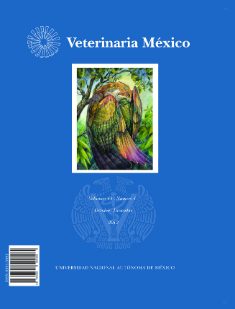Economic evaluation of two variations of a hormonal induction treatment in replacement heifers in a tropical dual purpose system
Main Article Content
Abstract
The aim of this study was to evaluate the productivity and profitability of two commercial sources of progesterone therapy as part of a hormonal induction treatment in a heifer dual purpose herd. A second objective was to determine the productivity and profitability of a recombinant bovine somatotropin (ST) application during induced lactation. Forty four Holstein heifers × Zebu crosses were used. Four treatments and two control groups were evaluated. For economic analysis all components of total cost (TC) of the companies were considered, further there was a simulation which was designed for three natural lactations after the hormonal induction, based on two scenarios in which different body weights were considered as different periods. Artificial induction of lactation yielded a 100% success rate in the four groups of animals with no statistical differences between them (P > 0.05). The best cost-benefit ratio (CBR) was recorded by CIDR treatment without ST. Although the four treatments showed economic viability, those without ST had a better ratio (B / C) than those supplemented with ST. As for the net present value (NPV), the benefits updated showed that the profits were higher when ST was not applied and, mainly, in the CIDR treatment. The internal rate of return (IRR) reveals that most of the treatments have a yield above 20%.
Article Details
License

Veterinaria México OA by Facultad de Medicina Veterinaria y Zootecnia - Universidad Nacional Autónoma de México is licensed under a Creative Commons Attribution 4.0 International Licence.
Based on a work at http://www.revistas.unam.mx
- All articles in Veterinaria México OA re published under the Creative Commons Attribution 4.0 Unported (CC-BY 4.0). With this license, authors retain copyright but allow any user to share, copy, distribute, transmit, adapt and make commercial use of the work, without needing to provide additional permission as long as appropriate attribution is made to the original author or source.
- By using this license, all Veterinaria México OAarticles meet or exceed all funder and institutional requirements for being considered Open Access.
- Authors cannot use copyrighted material within their article unless that material has also been made available under a similarly liberal license.



